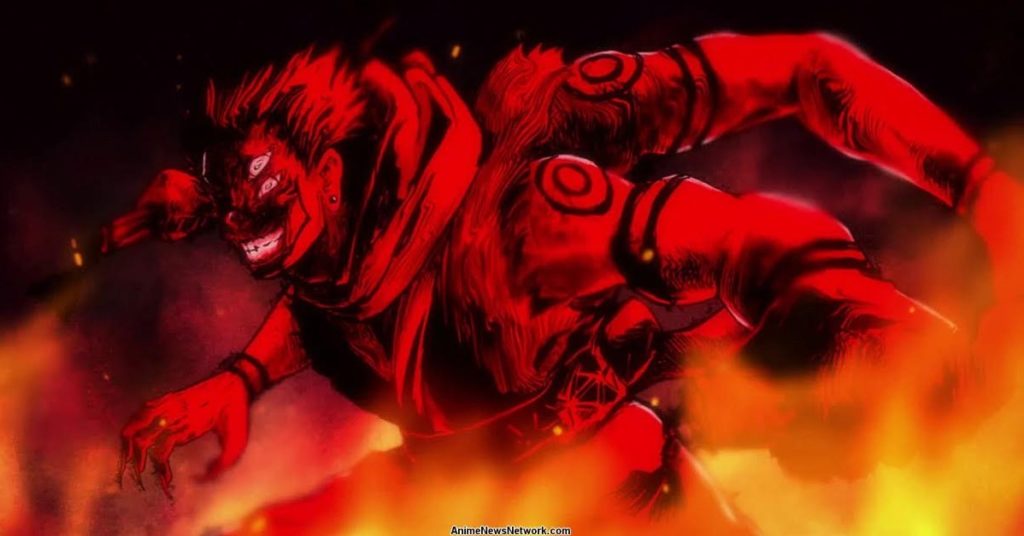Jujutsu Kaisen is an action-packed anime and manga series that explores some darker themes yet still knows how to keep things light. With legendary fight sequences and loveable characters (both heroes and villains), the world of Jujutsu Kaisen – created by writer and illustrator Gege Akutami – continues to draw us in with every episode and chapter.
Another alluring aspect of this series is that more than its being a feat of writing and visual skill, it is also deeply rooted in Japanese culture and history. This can be seen in little details such as the fact that it accurately portrayed temples being used as schools which were common during the Edo period of Japan, and the depiction of Shinto funerals with magnetic lead Yuji Itadori picking bones from the cremated ashes of his grandfather using chopsticks.
The show also explores Buddhist ideologies in the form of domain expansions and the hand signs the characters use. In Buddhism, they believe that within each person is a whole world that they have the power to control. Each hand sign performed by the characters in the series is based on real “mudras” or hand gestures used in Buddhist and Hindu ceremonies and dances.
These hand signs connect characters from the series to real deities that are involved with Buddhism, giving us a hint about the character. For example, for Satoru Gojo’s “Unlimited Void” he uses the Taishakuten-in mudra which is linked with the Buddhist deity Taishakuten (also known as the god Indra) who is believed to be the strongest god of them all. The same connections are made with other characters and their domain expansion mudras, making it obvious that there are no coincidences with the connections of each character to certain deities.
But more than just these finer details, the whole story of Jujutsu Kaisen was actually based on a 2005 myth that was famous in the region where creator Akutami grew up. As confirmed by Akutami in an interview, the myth describes how a box was found on a construction site. The box looked ancient, and it was nailed shut and wrapped with tags, one of which claimed that Ryomen Sukuna is sealed here.
The workers immediately contacted a priest who told them not to open the box before he got there to handle things, but of course… the box wasn’t going to stay closed.
Some students around the area stumbled upon the box and decided to sneak a peek. Long story short, two of them ended up dying while another one was transferred to a mental institution.
After the students opened the box, some of the workers saw it as well, but when the other workers found them, they were so shocked by what was inside that they couldn’t speak. Inside the box was one body that contained 2 heads, 4 arms, and 4 legs… sound familiar?
When the priest finally arrived, he told all the workers that they were basically doomed already but he would exorcise them all anyway. In the end, 3 of the workers caught a heavy fever.
But wait! There’s more… According to the myth, the person who spread this story online sought out the son of the priest that was summoned to the construction site. Apparently, the son was also educated in the Buddhist ways but decided to give this up and pursue a career in real estate instead. It was apparently the son’s responsibility to send the box to Kyoto, but it never ended up there. They were able to meet, and the son told the story of how Ryomen Sukuna ended up in that box in the first place.
According to him, in the 19th century, Mononobe Tengoku bought conjoined twins at a circus. This may explain why the body had 2 heads, 4 arms, and 4 legs. Mononobe Tengoku was the leader of a heretic sect and had some… weird tendencies. He locked up the conjoined twins in a room full of other people with deformities.
It was said that the conjoined twins reminded Tengoku of an asura or a power-hungry deity which is why he wanted them to survive thus leading him to stab all the other people in the room, leaving them there with nothing to eat but each other. Tengoku only opened the room when there was one survivor left and low and behold it was the conjoined twins.
As a prize for their survival, Tengoku then proceeded to starve and mummify them so that they wouldn’t decompose… As mentioned earlier, he was a peculiar person. The sect dubbed the mummified twins as “Ryomen Sukuna” who the twins reminded them of. Their statue-like remains were then wrapped up and became a symbol for their sect.
Legend has it that they took the mummified twins with them wherever they went, and wherever they went, disasters like deadly earthquakes always followed. This may be what led Akutami to describe Sukuna as a type of walking calamity.
After the last devastating earthquake, Tengoku slashed his throat – nobody knows why – and wrote under the statue, using his blood, that Japan shall perish. This act is believed to represent the continuation of the curse…
And that’s the end of the myth. Got the chills? It’s okay, us too. They say that Akutami hid a hint pointing to the series’ link to Japanese history and culture in the first chapter of Jujutsu Kaisen by including the mummified remains of a four-eyed being in the cover art. This was based on the real Japanese practice called sokushinbutsu, where monks would meditate and starve themselves, mummifying themselves alive so as not to decompose and hopefully reach enlightenment.
While the twins only reminded Mononobe Tengoku and his sect of Ryomen Sukuna. The actual Ryomen Sukuna also has quite the story.
Ryomen Sukuna is an actual person that existed in Japan’s history and was later mythified. The real Ryomen Sukuna was a leader, but the Yamato family sought to overthrow him through a hostile takeover. To justify all the violence the Yamato family instilled, they spread propaganda that depicted Sukuna as evil.
The story created by the Yamatos was that Sukuna disrespected the Imperial family. He was also said to have murdered thousands of people with the use of only a bow and arrow combined with his superhuman strength. This almost demon-like image of Sukuna continued to spread and grow larger and larger over time.
But Ryomen Sukuna has a completely different reputation to the people in the Hida region who praise him as a guardian and even as a benevolent figure in their history. They believe that Ryomen Sukuna was the reincarnation of mercy itself, brought Buddhism to that region, and built the Senko-ji temple. He also found the time to exorcise an evil dragon while he was at it.
It seems that it was almost like destiny that Ryomen Sukuna is the bearer of two completely opposing personas, both related to demons (either being one or exorcising one), as his name “Ryomen” may translate to “two-faced” and Sukuna as “to exorcise”.
The deep deep roots that Jujutsu Kaisen has in Japanese culture only add to the charisma of the series while flaunting the colorful and fascinating culture of Japan. The connections to the history and culture of Japan already have some people making theories and guesses as to what might be awaiting the beloved characters in this captivating story.
Other POP! stories you might like:
5 Japanese animated films to look forward to this year
15 Isekai anime recs that are out of this world
Introducing a metal bullet-hell game based on Filipino history & mythology














